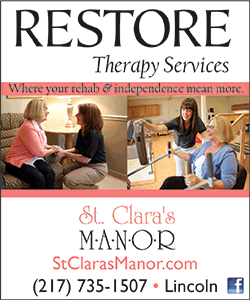|
 Dr. Thomas Frieden, director of the U.S. Centers for Disease
Control and Prevention, made the declaration on Sunday at a news
conference and called for an investigation into how the unidentified
nurse became infected while caring for Liberian national Thomas Eric
Duncan, the first Ebola patient diagnosed in the United States.
Duncan died last week at Texas Health Presbyterian Hospital. Dr. Thomas Frieden, director of the U.S. Centers for Disease
Control and Prevention, made the declaration on Sunday at a news
conference and called for an investigation into how the unidentified
nurse became infected while caring for Liberian national Thomas Eric
Duncan, the first Ebola patient diagnosed in the United States.
Duncan died last week at Texas Health Presbyterian Hospital.
Healthcare and infection control experts said that hospital staff
need to be coached through the stages of treating an Ebola patient,
making sure they have the right safety equipment and know how to use
it properly to prevent infection.
It was not immediately clear whether the Texas hospital prepared its
staff with simulation drills before admitting Duncan, but a recent
survey of nurses nationwide suggests few have been briefed on Ebola
preparations. Officials at the hospital did not respond to requests
for comment.
Some experts also question the CDC’s assertion that any U.S.
hospital should be prepared to treat an Ebola patient as the
outbreak ravaging West Africa begins to spread globally. Given the
level of training required to do the job safely, U.S. health
authorities should consider designating a hospital in each region as
the go-to facility for Ebola, they said.

"You don't scapegoat and blame when you have a disease outbreak,"
said Bonnie Castillo, a registered nurse and a disaster relief
expert at National Nurses United, which serves as both a union and a
professional association for U.S. nurses. "We have a system failure.
That is what we have to correct."
More than 4,000 people have died in the worst Ebola outbreak on
record that began in West Africa in March.
In recent months, the CDC has published detailed guidelines on how
to handle various aspects of Ebola, from lab specimens and
infectious waste to the proper use of protective equipment.
How that information gets communicated to frontline workers,
however, varies widely, Castillo said.
In many cases, hospitals "post something on a bulletin board
referring workers and nurses to the CDC guidelines. That is not how
you drill and practice and become expert," she said.
CDC spokesman Tom Skinner said the agency is still investigating the
case of the Dallas nurse, but stressed that "meticulous adherence to
protocols" is critical in handling Ebola. "One slight slip can
result in someone becoming infected."
Skinner said the CDC is going to step up its education and training
efforts on how to triage and handle patients, and may consider
designating specific hospitals in each region as an Ebola treatment
facility.
"We've been doing a lot over the past few months, but clearly there
is more to do," he said. "The notion of possibly transporting
patients diagnosed with Ebola to these hospitals is not something
that is out of the question and is something we may look into.”

LEGAL RECOURSE
Dr. Gavin Macgregor-Skinner, an expert on public health preparedness
at Pennsylvania State University, also disagreed with the talk of a
breach of protocol, saying it just puts the onus on the nurse.
"I think that is just wrong," said Macgregor-Skinner, who helped the
Nigerian government train healthcare workers when a traveler from
Liberia touched off an outbreak of Ebola this past summer.
“We haven't provided them with a national training program. We
haven't provided them with the necessary experts that have actually
worked in hospitals with Ebola," he added in reference to U.S.
hospital staff.
[to top of second column] |

Legal experts said the Dallas nurse may be entitled to compensation
if the hospital carries workers' compensation insurance. If it
doesn’t, she would have the right to sue the hospital for damages
under Texas law, said Jay Harvey, a lawyer in Austin, Texas.
Her ability to show that the hospital was negligent by, for
example, not providing proper training, would be key to winning such
a suit, Harvey said.
Sean Kaufman, president of Behavioral-Based Improvement Solutions in
Atlanta, helped train healthcare staff at a special isolation unit
at Atlanta's Emory University which treated U.S. aid workers Dr.
Kent Brantly and Nancy Writebol, the first two Ebola patients to be
treated on U.S. soil.
He would observe the nurses and doctors as they cared for patients
and keep detailed notes when someone would accidentally touch their
sleeve or mask with an infected glove.
He then helped coach them through the process of carefully removing
their infected gear. Facilities caring for Ebola patients are
encouraged to use a buddy system so that colleagues are watching
each other to make sure they don't take risks.
"Doctors and nurses get lost in patient care. They do things that
put themselves at risk because their lens is patient-driven,"
Kaufman said. In Dallas, "I suspect no one was watching to make sure
the people who were taking care of the patients were taking care of
themselves," he said.
CDC and Texas health officials said the nurse who became infected
had been wearing the recommended personal protective gear for Ebola,
which consists of gloves, a gown, a mask, and a shield to protect
the eyes from possible splatters from the patient.
According to experts, that gear offers the minimum level of
protection. When an Ebola patient enters the latter stages of the
disease, as Duncan did, they become so-called fluid producers,
Kaufman said.
"Towards of end of the illness, the virus is trying to live and
thrive. It's trying to get out of the person's body. It's producing
massive amounts of fluid," he said.

At that point, caregivers need to add more layers of protective
gear, such as double gloves and a respirator or a full bodysuit.
Those kinds of decisions need to be made by managers who are
constantly assessing the risk to healthcare workers, Kaufman said.
Macgregor-Skinner said all U.S. hospitals must be ready to identify
and isolate an Ebola patient, but should also be able to turn to a
regional facility that is better prepared to receive them.
“Every hospital can then prevent the spread of Ebola, but not every
hospital in the U.S. can admit a patient in the hospital for
long-term care,” he said.
(Reporting by Julie Steenhuysen; Additional reporting by David
Ingram in New York; Editing by Michele Gershberg and Martin Howell)
[© 2014 Thomson Reuters. All rights
reserved.] Copyright 2014 Reuters. All rights reserved. This material may not be published,
broadcast, rewritten or redistributed.
 |